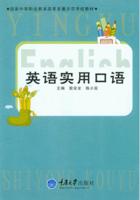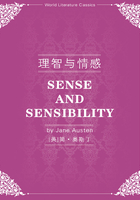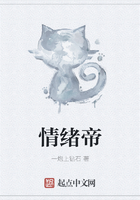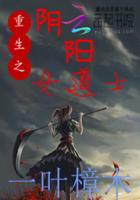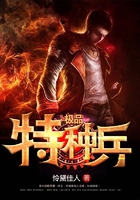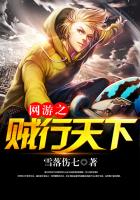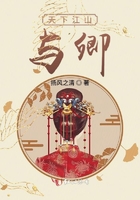A:There are so many people that the tickets are all sold out!
B:Luckily we got the last two。
A:Look,B。The Four Great Inventions!
B:Gunpowder,compass,the paper making,and the printing。
A:I really admire those who made such great inventions!
B:Yeah,ancient Chinese were really smart!
A:They were milestones in their times。They have profound significance in Chinese traditional culture and the world development。For example,the invention of papermaking is one of China's special contributions to the spread and the development of human civilizations。
B:What about the movable type printing?
A:Movable type printing began with engraving printing of Sui Dynasty(581 A。D。-618 A。D。)。Bi Sheng of Song Dynasty(960 A。D。-1276 A。D。)improved the movable type printing by making the baked clay into movable characters for type-setting printing;thus he accomplished a significant revolution in printing history。
B:Well,I know that the compass was introduced to Europe approximately in the 12th century。Its application to the navigation resulted in the voyage of Columbus'discovery of the New World and Magellan's global navigation。
A:That's true。And the Gunpowder was invented in the Song Dynasty(960 A。D。-1276 A。D。)in China。It is the mixture of potassium nitrate,sulfur and charcoal-elements that people took as medicine in ancient times,hence the name“gunpowder”in Chinese means“burning medicines”。
B:It really opened my eyes today,thank you!
A:You're welcome,my pleasure。
A:人太多了,票都卖完了。
B:幸好我们买了最后两张。
A:看,B,四大发明!
B:火药、指南针、造纸术和印刷术。
A:我真崇拜这些伟大的发明者。
B:古代的中国人真得很聪明!
A:它们是那个时代里的程碑,因为这些发明对中国的传统文化和世界发展都产生了深远的影响。例如,造纸术的发明是中国对人类文明传播和发展的特别贡献。
B:那活字印刷术呢?
A:活字印刷术是以隋朝(公元581-618年)的雕版印刷术为基础发展起来的。宋朝(公元960-1276年)的毕升通过制成胶泥活字改进了活字印刷,完成了印刷史上一次重大的革命。
B:是的,我了解到直到12世纪才传到欧洲的指南针被应用到航海,帮助哥伦布发现了新大陆并且实现了麦哲伦的环球航行。
A:说得很对。火药是在宋朝时发明的。火药由硫磺、硝石、木炭混合而成——古人用作药材的元素,因此“火药”在中文里是“燃烧的药品”的意思。
B:我今天真是大开眼界,太感谢了!
A:不客气,我很乐意。
Milestone n。里程碑
Papermaking n。造纸术
Movable type printing n。活字印刷术
Engraving printing n。雕版印刷术
Compass n。司南
Gunpowder n。火药
Potassium nitrate n。硝石
Sulfur n。硫酸
Charcoal n。木炭
背景知识——中国古代四大发明
Papermaking
In papermaking a dilute suspension of fibers in water is drained through a screen such that a mat of randomly interwoven fibers is laid down。Water is removed from this mat of fibers by pressing and drying to make paper。Most paper is made from wood pulp,but other fiber sources such as cotton and textiles may be used。
The history of papermaking can be traced to China about 105 A。D。,made by Cai Lun。Modern papermaking began in the early 1800s in Europe with the development of the Fourdrinier machine,which produces a continuous roll of paper rather than individual sheets。
造纸术
在造纸中,由经过制浆处理的植物纤维的水悬浮液,在网上交错的组合,初步脱水,再经压缩、烘干而成。大多数纸是由木浆制成,其它的纺织材料例如棉和织物也可用来作制纸原料。
造纸术的历史可以追溯到约公元105年中国的蔡伦发明的造纸术。现代的造纸术则随着福德林尼尔造纸机的发展开始于18世纪早期的欧洲,可以连续不断的生产纸张而不只是生产单个的几张。
Movable Type Printing
Different from the old-fashioned wood-block printing,it involves the making of clay types,one for each character。This method proved to be very scientific,for the clay types could be dismantled and thus used again。Bi Shen's technique was the most remarkable achievement in printing。
活字印刷术
与旧的雕版印刷不同的是,活字印刷术是分体刻字模。这种方法非常的科学,因为它最大的特点是字模可以拆分并重复使用。毕升这项技术的发明是对印刷方法的一次革命性创新。
Compass
Referred to as a“South-pointer”,the spoon or ladle-shaped compass is made of magnetic lodestone,and the plate is of bronze。The circular center represents Heaven,and the square plate represents Earth。The handle of the spoon points south。The spoon is a symbolic representation of the Great Bear。The plate bears Chinese characters which denote the eight main directions of north,north-east,east,etc。
司南
被称作是“指南针”,勺形的司南是由天然磁石和铜盘制成的。圆形的中心代表天,而方形的托盘代表地,勺柄指向南方。勺子是大熊的象征性代表。上面有汉字的托盘分别指向八个主要的方向,北、东北、东,等等。
Gunpowder
The military applications of gunpowder began in the Tang Dynasty。Explosive bombs filled with gunpowder and fired from catapults were used in wars。During the Song and Yuan dynasties,the military applications of gunpowder became common and some other weapons like“fire cannon”,“rocket”,and“missile”were introduced。
火药
火药的军事应用开始于唐朝。从弹弓射出的装满火药的炸弹用于战争。宋元时期,火药的军事运用变得普遍,也引进了一些其它的武器,像“火炮”、“火箭”、“突火枪”等等。


